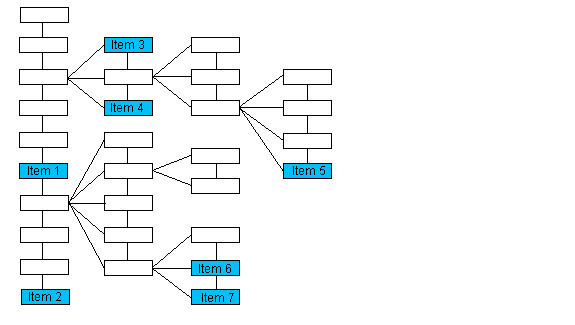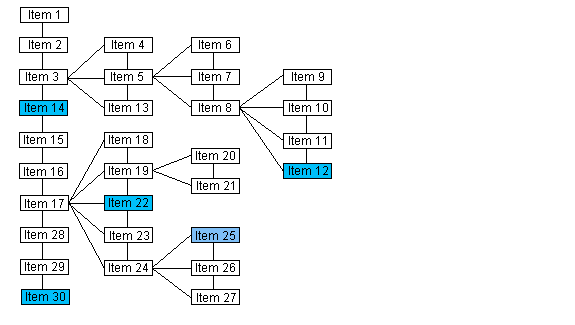

| Leadtools.Dicom Namespace > DicomDataSet Class : GetLastKey Method |
public DicomElement GetLastKey( DicomElement element, bool tree )
'Declaration Public Function GetLastKey( _ ByVal element As DicomElement, _ ByVal tree As Boolean _ ) As DicomElement
'Usage Dim instance As DicomDataSet Dim element As DicomElement Dim tree As Boolean Dim value As DicomElement value = instance.GetLastKey(element, tree)
public DicomElement GetLastKey( DicomElement element, bool tree )
ObjectiveC Syntax
public: DicomElement^ GetLastKey( DicomElement^ element, bool tree )

| If the passed object points to: | The method returns an object pointing to: |
|---|---|
| Item 1 | Item 2 |
| Item 3 | Item 4 |
| Item 5 | Item 5 |
| Item 6 | Item 7 |
| null | Item 2 |
If the Data Set is evaluated as a list, the last item in the list is returned. Please note that the numbering of the items in the following illustration does indicate the order of the items when the Data Set is evaluated as a list.

| If the passed object points to: | The method returns an object pointing to: |
|---|---|
| null | Item 30 |
| Item 12 | Item 30 |
| Item 14 | Item 30 |
| Item 22 | Item 30 |
| Item 25 | Item 30 |
The following methods will also help you navigate the Data Set as either a tree or a list:
If you evaluate the Data Set as a tree, you can also use the following methods to navigate the tree:
Target Platforms: Windows 7, Windows Vista SP1 or later, Windows XP SP3, Windows Server 2008 (Server Core not supported), Windows Server 2008 R2 (Server Core supported with SP1 or later), Windows Server 2003 SP2